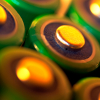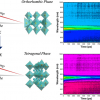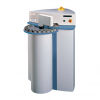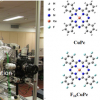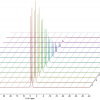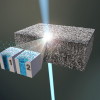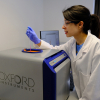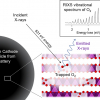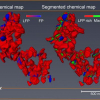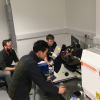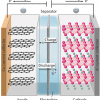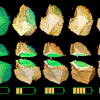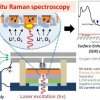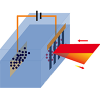Focus on Batteries
WITec GmbH has delivered a new instrument to the Center for Solar Energy and Hydrogen Research (ZSW) Baden-Württemberg.
ICP-MS is used to identify the presence of impurities in lithium battery materials.
Raman spectra of battery electrolytes provide unique information on their chemical state-of-health.
New work overviews the crucial charge carrier transfer processes and dynamics within perovskite active layers by means of time-resolved ultrafast laser spectroscopy.
This application note discusses the advantages of this WDXRF spectrometer for quantification of nickel ores.
UHV X-ray photoelectron spectroscopy and ultraviolet photoelectron spectroscopy systems have unravelled the Na interaction process at Na/CuPc and Na/F16CuPc interfaces.
This application report outlines practical approaches for NMR electrolyte analysis and how the measured parameters can affect performance using examples from lithium battery R&D.
The Körber European Science Prize 2021, worth one million euros, is to be awarded to University of Cambridge chemist Professor Clare Grey, one of the UK’s leading battery researchers.
Battery electrodes, storage devices for gases and some catalyst materials have tiny functional pores that can accommodate atoms, ions and molecules. Anomalous small-angle X-ray scattering and X-ray absorption near-edge structure spectroscopy can show how the pores fill.
Oxford Instruments, Oxford University and Henry Royce Institute have agreed an R&D collaboration to use benchtop NMR to develop new methods to monitor reactions in battery cells.
Researchers have been able to fully identify the nature of oxidised oxygen in the important battery material, Li-rich NMC, using RIXS and 17O MAS NMR spectroscopies.
Rechargeable lithium ion batteries (LIBs) have a significant role in modern society: from portable electronic devices to electric cars and bicycles. Indeed, I would be surprised if anyone reading this does not have a LIB on or near them now. Both NMR and EPR spectroscopies and their imaging modalities can provide useful information, which will prove important in battery research and the development of ever improving batteries.
A coherent, nanoscale beam of X-rays from a synchrotron source have been used to map chemical reactions happening inside lithium-ion batteries in three dimensions at the nanoscale.
Raman, infrared, x-ray photoelectron and ultraviolet/visible spectroscopies are being used at the University of Liverpool to help develop better energy storage devices.
Lithium ion batteries power most of the electrical devices we rely on every day. As well as mobile phones, laptops and tablets, they are finding increasing use in vehicles, with electric cars not uncommon on our streets. This article is from a young scientist who has won help for her research through an instrument company’s support programme. You can find out more, read the article and even apply yourself.
X-ray images and XANES reveal battery materials’ chemical reactions in five dimensions: 3D space plus time and energy.
Raman spectroscopy helps lithium-air batteries live up to their promise: we could one day be driving electric cars 500 miles or more without recharging, or using laptops for weeks without having to plug in. They could also replace lithium-ion batteries, currently the standard in many consumer electronics.
Berkeley Lab researchers’ novel diffraction spectroscopy technique will provide insight to chemical processes at important battery interface.



